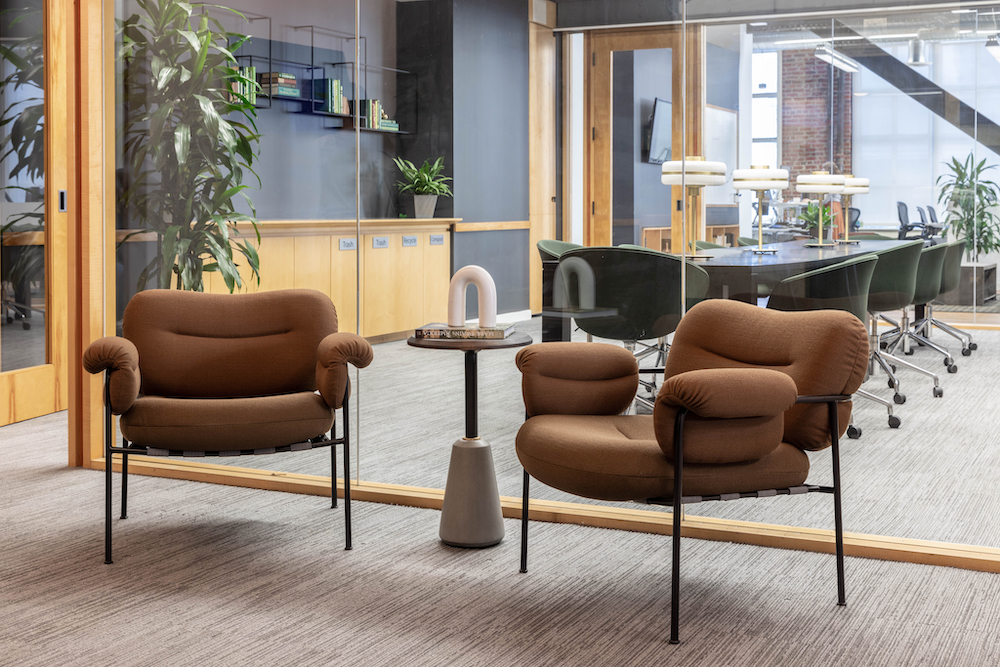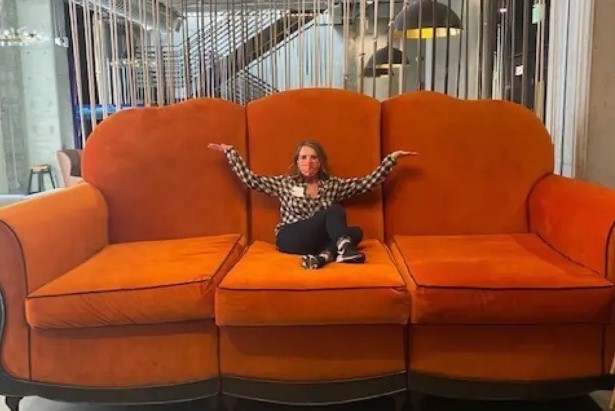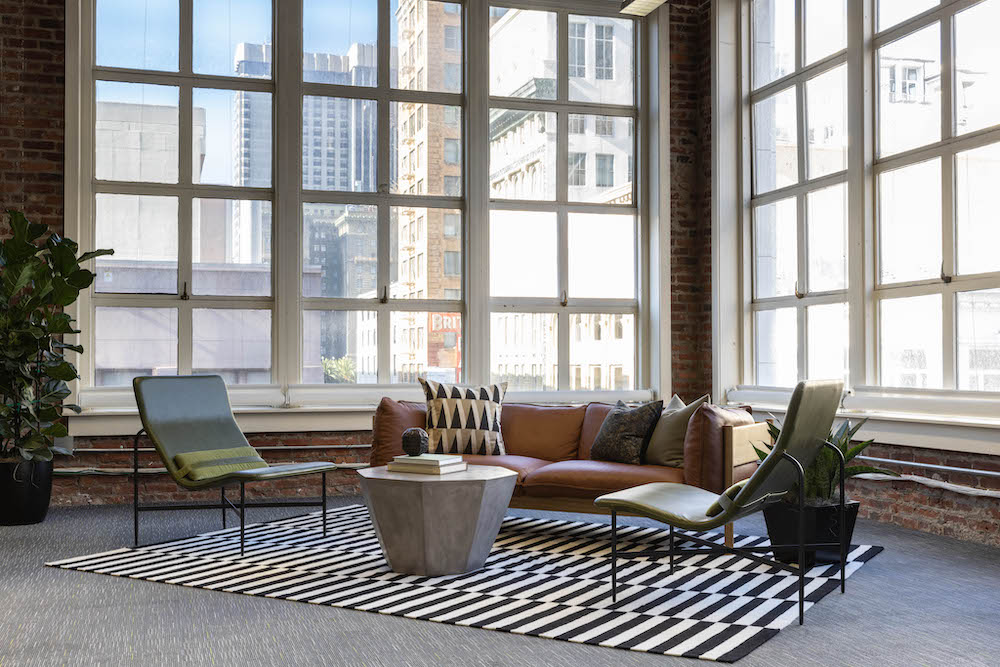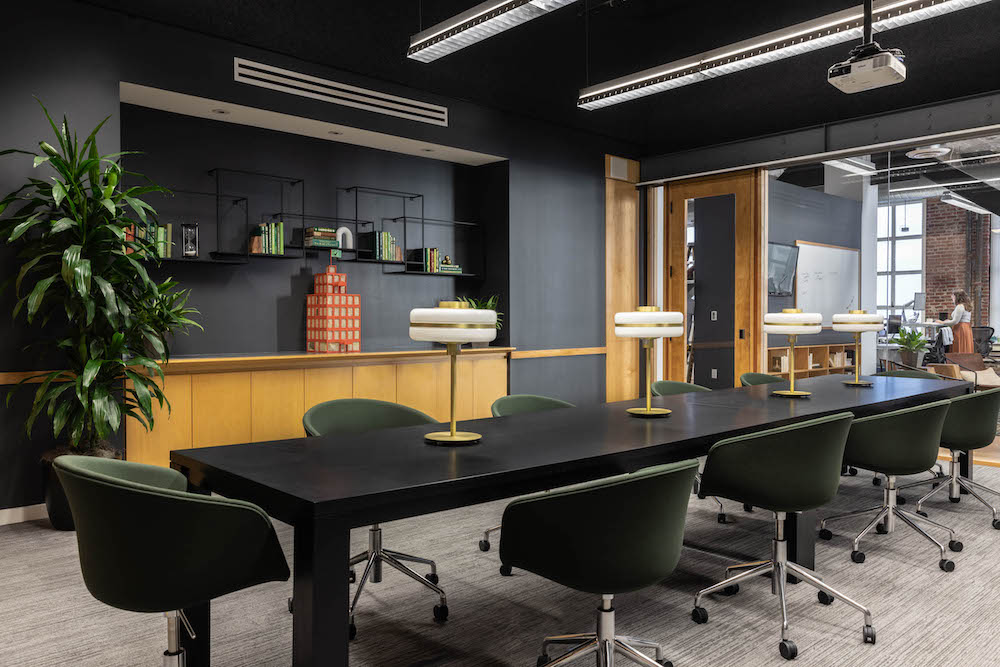Three years in, Reseat is revolutionizing sustainable workplaces with circular furniture solutions for the conscious enterprise.
Since meeting the Reseat team at NeoCon 2021, they’ve enjoyed rapid adoption (and even were winners of our 2022 Next Work Environment Competition!) so naturally we’ve kept our eye on them and jumped at the chance to reconnect with the Founder, Brandi Susewitz, two years later. What follows is an update from our July 2022 interview – plus some surprisingly easy ways to get involved with them now.
Meet Reseat: Where a little bit of forethought can end a lot of waste.
WDM: Reseat was born out of the pandemic. What do you think is the biggest factor that has led to your business’s rapid evolution and expansion?
Brandi Susewitz: I think the biggest factor in Reseat’s evolution is the timing
in which we introduced our company/concept. In the past, when we talked about sustainability and the circular economy, it was always something that was “nice to have” but now it’s imperative for the future of our planet, and I think people finally understand that-in part because of what we all experienced during the pandemic which was all of a sudden, one day our planet is in a mandatory lock down. Well, with climate change and the damage it’s doing to our planet, it’s going to be a lot more difficult to reverse it. We won’t be able to just come up with a vaccine to make it all better.
WDM: Given how much space is being repositioned and vacated, a lot of it newly furnished and hardly utilized, is that an advantage for building your inventory?
Brandi Susewitz: Oh absolutely, we still (2.5 years after the pandemic) have access to a ton of brand-new furniture in boxes that is available. For example, Wework still has millions of dollars of brand new inventory in boxes that we are selling, however I don’t think people realize that this has always been a problem. I hear many people say to me that this is a great business concept because of the pandemic and all the furniture that ended up being available, but really, the statistic that 17 billion pounds of office furniture ends up in a landfill is a statistic from 2017 (well before the pandemic) and most of it is less than 10 years old because most leases last between 5-7 years.

WDM: What innovations in your enterprise tool make it even easier for owners to manage their furniture inventories?
Brandi Susewitz: Our process consists of capturing the order information at the time of order purchase, by uploading the SIF to our platform. Our platform then creates the “second-life cycle passports” or Reseat ID product cards that contain all the pertinent information regarding the furniture so that when the time comes when the customer knows that they will be relocating and not need it anymore, they easily login to their dashboard and click sell, easily connecting the inventory to our marketplace. The platform automatically prices everything at 20 cents on the dollar because that is what we can expect on the second-life cycle market. In addition, they can manage ALL their furniture across ALL locations and create move requisitions, sell, donate, renew or reorder all within the dashboard.
WDM: How have you built out the partnership with furniture dealers in order to make the circularity of product acquisition and disposition more logical and easier to manage?
Brandi Susewitz: We are thinking about the end of the project in the beginning by proactively registering dealers’ projects with Reseat IDs which gives their customers a viable plan for what will happen to the furniture when they are done using it. As a preferred Reseat dealer, you basically agree that our industry has a major waste issue and you want to set up your customers for success by providing them with a viable plan, from the beginning, so that the furniture stays out of landfill.
We are an industry that operates at enormous scale, so we must think about the end in the beginning and have a plan. To do this successfully, you need an accurate inventory, which is captured at order placement and each piece of furniture is given a Reseat ID that follows the life cycle of the furniture and easily connects to our marketplace and listed for sale when the user is done. Our goal is that every contract furniture order has a Reseat ID so that it all has a plan for what will happen to it when the user is done with it-and NOT landfill!

WDM: Where do you see further growth with your concept?
Brandi Susewitz: The sky is the limit, really. This same concept could be used in the building industry, and everything else that is in a building, like computers, doors, commercial kitchen equipment etc. but I won’t pretend I feel like I can build that business successfully. There’s a lot to know about many different industries if you open it up like that. I know contract furniture very well so I’m going to stick with that and do that to perfection. I’ll let someone else figure out the other stuff!
WDM: What is the most interesting furniture finds that are currently listed on your website?
Brandi Susewitz: We’ve had a lot of interesting things that we ended up with. One time I had a very large sofa that you had to climb up on a stool to actually sit in during our liquidation of Twitch. We’ve had strange statues, foosball tables, ping pong tables and more!

From our July 2022 interview:
How Reseat Began
As a twenty-plus year office furniture industry veteran, Brandi Susewitz found herself contemplating all the changes that the disruption of the pandemic uncovered. The lightbulb moment came when realizing how the pivot from the “office as we knew it” to “working from home” or “the hybrid work experience” would result in tough corporate real estate decisions: relinquish space, re-think their office designs, even give up their space altogether.

What could happen to all that furniture?
While there were small movements to move the office furniture business to a more responsible, sustainable solutions in the development of material, design of products there were random attempts to organize and develop businesses that dealt with this, beyond the traditional used office furniture store. The easy (and only) solutions were usually a trip to the dump, sale to a used furniture dealer/liquidator or options for donation.
Designers, by disposition are not inclined to be interested in this aspect of a project. Furniture dealers may or may not be helpful in developing viable solutions. Facility managers hard pressed to just “get rid of it.” There had to be a better way.

What if there was a way to develop a tool to better manage the furniture process that not only took the initial acquisition and inventory management under control, but also provided a full life cycle solution to deal with the changes for the duration of the furniture’s life in the initial installation and add on a way to repurpose it as the company’s furniture needs changed?
Thus, Reseat evolved as a multipurpose platform to help everyone from furniture manufacturers/dealers, designers, facility managers and end users to have a useful tool to enable better management of furniture inventory, but to have a plan in place to manage the disposition of the furniture as needs changed.

A Real Life Story
Brandi Susewitz: Here’s the thing. The facilities planning and design team at Oracle doesn’t just wake up one day and decide they are moving in 6-8 weeks. Oracle has known for at least a year that they are moving and that they aren’t bringing their furniture. I can share this anecdote because they were talking to me, as I was working at a furniture dealer, about their new furniture requirements 12 months before they were actually moving.
I realized that if they know a year in advance that this furniture is not going to be used in their new location, why not market the furniture ahead of time, so your disposition plan is part of the overall project plan.
Ready to Get Started?
Whether you are in the market to buy, or in the position of having to dispose of office furnishings, Reseat is an option that is designed to make life easier for all, in addition to providing a robust solution to eliminate the wasteful and ecologically unsustainable practice where 99% of used office furniture ended up in landfills.
Connect with Reseat:
Facebook | YouTube | Instagram | LinkedIn
This article was created in partnership with Reseat


